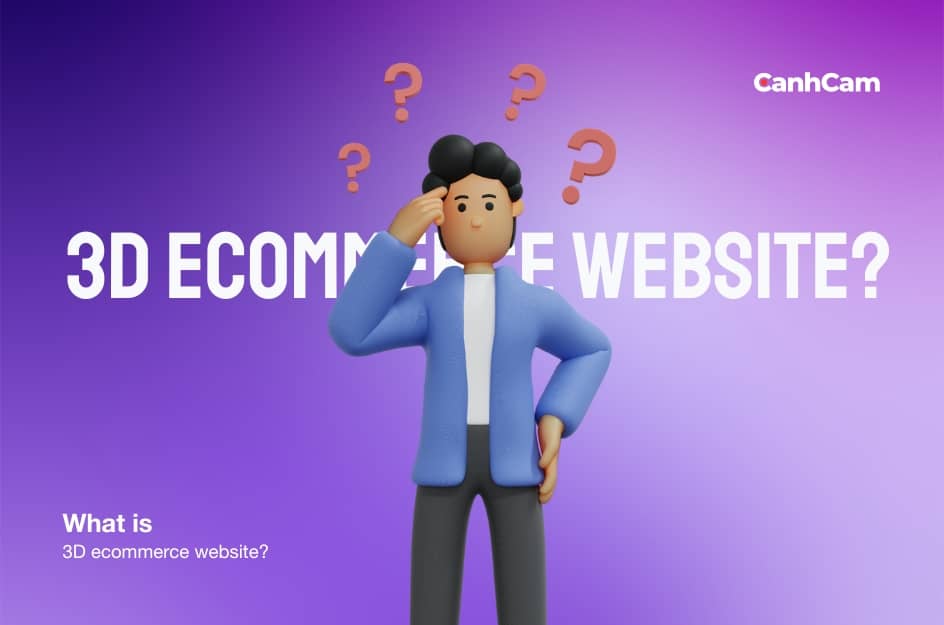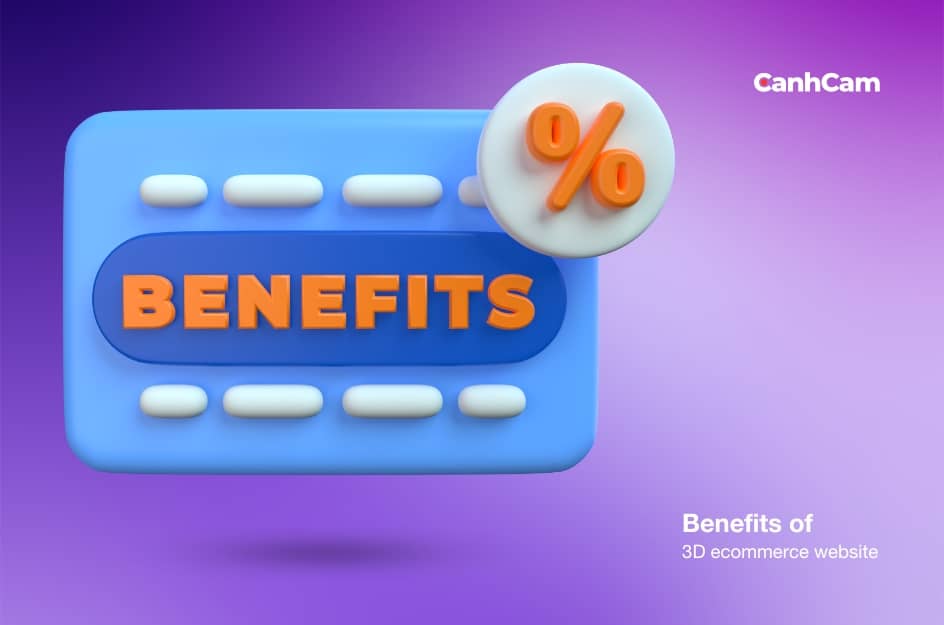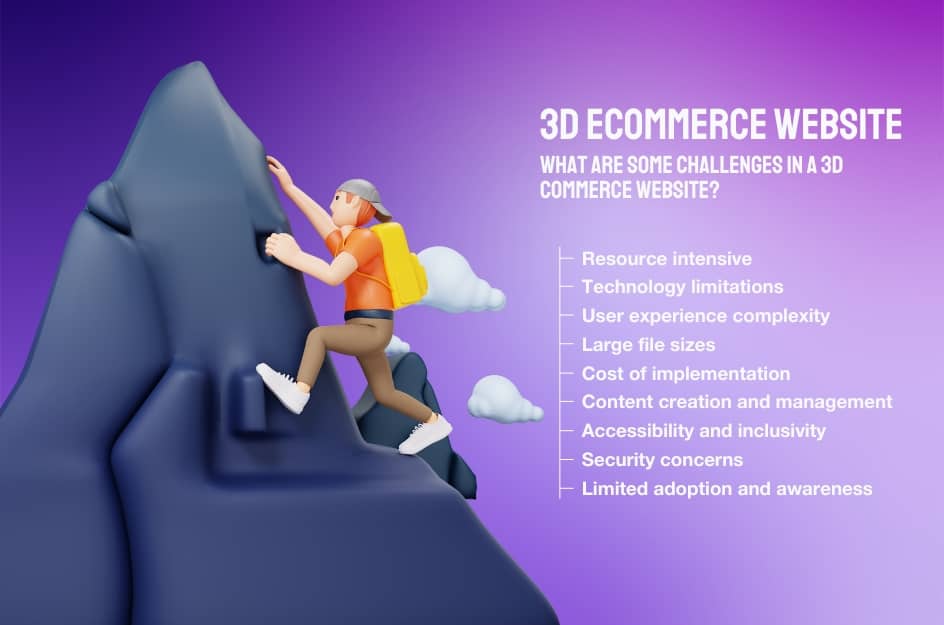Have you ever purchased something online and wished you could try it before buying it? Wouldn't it be nice to be able to see what the item looks like at home on an e-commerce site before you pull out your wallet? Wouldn't you like to see how high your new shelf is? Maybe the shirt you were looking for would look much better than the picture. What if there was a way to do all this and more? This is exactly what 3D Commerce provides for all buyers!
3D is one of the biggest buzzwords in the world of e-commerce, and it doesn't look like it's going to stop anytime soon. It is a revolutionary technology whose impact on the way we view and experience trading is constantly evolving with technology. But what exactly is 3D ecommerce website and how will it change the e-commerce landscape? Here are some answers.
What is a 3D Ecommerce Website?
When shopping online, how do you know if a product is right for your home or matches your style? and what exactly is a 3D ecommerce website? Just reading the description is not enough to make the right decision.
3D ecommerce website is a new technology that connects the physical world of sales with the digital world of e-commerce. 3D retail allows online shoppers to enjoy the same experience as in a physical store. Each product is presented in three dimensions so customers can view it from all angles, zooming and rotating for a better view. Customers can also place products in a scene (like a living room), change colors or sizes, and add text (such as their name or brand).
Looking for Website Design? Visit our Services: Web design agency in Melbourne

3D E-commerce lets you virtually touch products, boosting engagement and sales.
Likewise, augmented reality (AR) technology adds an extra layer to our physical reality. You can imagine the product with all the details of your room. With 3D trading, on the other hand, you simply see the product in your room: there is no background or additional elements. It's like you're holding a real physical object in your hand (without feeling the sensation).
As more people shop online today and have fewer opportunities to interact with products before physically purchasing them, 3D retail gives customers greater confidence when they make a purchase.
How Does a 3D Ecommerce Website Work?
The protocol does its job during a purchase, collecting the information necessary and transferring it from the online store to the client's card issuer. Data such as the customer purchasing history and ID verification including the device they use and their buying habits are among the items that are transferred.
Read more: What is Ecommerce Headless? How to Build a Headless Ecommerce Store?
An algorithm, especially created to verify the consumer's ownership of the card with the least error, thus safeguarding the verification of identity during the transaction process. The information is then processed directly by the issuer of the credit card and passed on to the online store thus enabling a smooth authentication of the buyer and reducing the transaction time between purchase and authentication.

3D E-commerce uses interactive models for a more engaging shopping experience, boosting conversions.
The integration of cutting-edge three-dimensional (3D) tech leads to the revolution of the online shopping experience on ecommerce platforms. In contrast with traditional e-commerce websites which are based on images and videos, 3D eCommerce platforms possess an interactive and immersive 3D model of products.
The 3D models that are being elaborated very precisely enable customers to change items in real-time, explore all details in 360 degrees, and interact with various functions, improving their shopping experience. These platforms are powered by cutting-edge rendering technologies. They provide smooth user interactions across devices and browsers and offer the option to add AR and VR to boost user engagement.
Whilst implementation challenges and costs are very apparent, businesses will gain increased engagement, higher conversion rates, and lower return rates through 3D technology adoption in e-commerce. 3D eCommerce presents a revolutionary change in online shopping as it allows consumers to visually observe and buy merchandise in a virtual space.
Benefits of 3D Ecommerce Website
3D ecommerce websites aren't just flashy gimmicks; they offer a wealth of benefits for both businesses and customers. Here's how this innovative technology can transform your online store:
Enhanced Product Visualization
3D models allow customers to view products from multiple angles, rotate them, zoom in/out, and interact with them, providing a more realistic representation of the product compared to traditional 2D images.
Improved Customer Engagement
The interactive and immersive nature of 3D experiences captures customers' attention and keeps them engaged for longer periods, leading to increased time spent on the website and potentially higher conversion rates.
Reduced returns
By offering a more accurate representation of products, 3D eCommerce websites can help reduce instances of customers returning items due to mismatched expectations, ultimately saving businesses time and money on return processing and restocking.
Personalized Shopping Experiences
Advanced 3D technologies can enable personalized product recommendations based on customer preferences and browsing history, enhancing the overall shopping experience and increasing the likelihood of repeat purchases.

Level up your online store! 3D websites let shoppers view products from all angles, boosting engagement and conversions.
Competitive Advantage
Implementing 3D technology sets businesses apart from competitors by offering a unique and innovative shopping experience that can attract and retain customers who value interactive and immersive shopping environments.
Cost Savings
While initially requiring investment in 3D modeling and technology integration, over time, 3D eCommerce websites can lead to cost savings by reducing the need for physical product photography, sample production, and showroom expenses.
Global Reach And Accessibility
3D eCommerce websites can be accessed from anywhere with an internet connection, enabling businesses to reach a global audience without the limitations of physical store locations, thereby expanding market reach and potential sales.
Reduced Need For Physical Showrooms
For businesses that traditionally rely on physical showrooms to showcase products, 3D eCommerce websites can serve as virtual showrooms, reducing the need for expensive brick-and-mortar locations and associated overhead costs.
Cross-Selling And Upselling Opportunities
Interactive 3D product visualization can facilitate cross-selling and upselling by showcasing related or complementary products alongside the main item, thereby increasing the average order value and maximizing revenue potential.
Overall, implementing a 3D eCommerce website can significantly enhance the online shopping experience for customers while providing businesses with a competitive edge and various opportunities for growth and efficiency improvements.
What Are Some Challenges In A 3D Commerce Website?
While the adoption of 3D technology in ecommerce brings numerous benefits, it also presents its fair share of challenges that businesses need to navigate. Understanding and addressing these obstacles is crucial for a successful implementation. Let's delve into some of the key challenges:
Resource Intensive
Creating high-quality 3D models requires significant time, expertise, and resources. This can be challenging for businesses, particularly smaller ones, as they may lack the necessary skills or budget to invest in 3D modeling software and talent.
Technology Limitations
Some users may have devices or internet connections that are not capable of rendering 3D content smoothly. Ensuring compatibility across a wide range of devices and browsers can be challenging and may require additional optimization efforts.
User Experience Complexity
While 3D experiences can be immersive, they may also introduce complexity for users, especially those unfamiliar with navigating 3D environments. Designing intuitive user interfaces and providing clear instructions for interacting with 3D models is essential to avoid confusion and frustration.
Large File Sizes
3D models and assets can be large in file size, leading to longer loading times and potentially impacting website performance. Optimizing 3D content to balance quality with performance is crucial to maintain a smooth user experience.
Cost Of Implementation
Developing and integrating 3D eCommerce capabilities into an existing website can be costly, requiring investment in software, hardware, and specialized expertise. Additionally, ongoing maintenance and updates may incur additional expenses.
Content Creation And Management
Managing a library of 3D models for products can be challenging, especially for businesses with a large and diverse product catalog. Keeping models up-to-date and consistent across platforms requires effective content management processes.

Challenges include creating high-quality 3D models and ensuring smooth performance across devices.
Accessibility And Inclusivity
Some users, such as those with disabilities or using assistive technologies, may face barriers when accessing and interacting with 3D content. Ensuring that 3D eCommerce websites are accessible to all users is essential for inclusivity and compliance with accessibility standards.
Security Concerns
Introducing 3D content and interactive features may expose websites to new security risks, such as vulnerabilities in 3D rendering software or potential exploitation of user interactions. Implementing robust security measures to protect against threats is crucial.
Limited Adoption And Awareness
Despite the potential benefits, 3D eCommerce is still relatively new, and adoption rates among consumers may be limited. Educating customers about the advantages of 3D shopping experiences and overcoming resistance to change can be challenging for businesses.
Addressing these challenges requires careful planning, investment, and ongoing optimization to ensure that 3D eCommerce websites deliver value to both businesses and customers while mitigating potential drawbacks.
Frequently Asked Questions (FAQs)
1. How do I create an ecommerce website?
To create an ecommerce website:
- Plan and Research: Define goals, target audience, and products.
- Choose Platform: If only Shopify, WooCommerce, or something like that is available.
- Design and Develop: Create a user-friendly layout, add products, and set up payments, and shipping.
- Test and Launch: Make sure everything starts and then go for launch.
- Market Your Website: Use SEO and social media for promotion.
- Maintain and Optimize: Frequently update content and track how it's doing.
2. Why do online need 3D designs for their product?
Companies use 3D models, AR, and VR to allow customers to see every angle of a product and interact with it online before purchasing. 3D product merchandising can grow sales and at the same time reduce returns.
Conclusion
The 3D e-commerce website brings a great change in online shopping that now surpasses the level of 2D products displayed with its dynamic and immersive experiences. These platforms which employ the use of advanced technologies which include 3D modeling, interactive display, and control offer the customers more interactive and realistic images of their products which they can explore and visualize just as they would in a physical store.
Along with the many advantages they provide, there also emerge difficulties for 3D e-commerce websites, such as technical complexity problems, performance optimization issues, compatibility issues, and continuous support and updates.
While technology is here to stay and customer demands are growing, the role of offering compelling and diversified online shopping experiences will only be of more importance in the future. Ecommerce businesses are expected to take the lead in this trend with the help of interactive capabilities and 3D visualization in a competitive market where standing out would become imperative.

